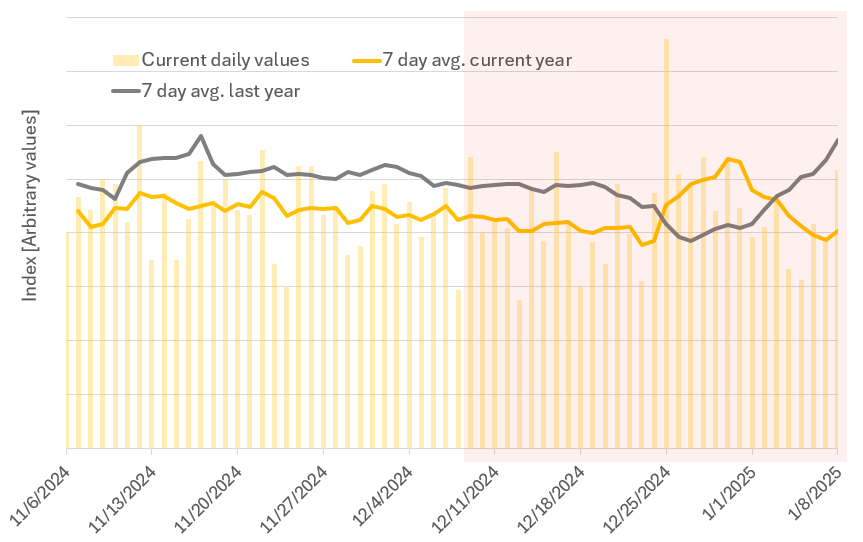Dutch Border Control Measures: No Significant Disruption to Trade
Market Monday - Week 3 - Data confirms no impact on trade from Dutch border controls
The Netherlands introduced border controls on December 9th to curb illegal migration and people smuggling, raising concerns about potential traffic disruptions. Officials announced that the planned mobile controls, rather than the stationary checks, would hopefully not impact international traffic and trade. To validate this assumption, data is essential.
Now, four weeks after implementation, we can evaluate these measures` impact. The following chart illustrates the development of daily average waiting times at the Netherlands' borders for inbound traffic from Germany.
Border Waiting Times crossing from Germany to Netherlands
Source: Transporeon Real-Time Visibility Platform
The chart displays daily averages and seven-day moving averages of waiting times at the five most frequently used borders between Germany and the Netherlands. With over 20 million annual truck movements in our dataset, these crossings provide a representative sample of heavy truck traffic.
Detailed analysis shows no measurable impact from the controls implemented after December 9th. Both daily values and weekly averages remained stable, with current waiting times actually lower than the previous year. While there was slight variation during the Christmas period, this cannot be attributed to a structural impact due to the new border measures.
What does this mean?
These developments have fortunately not disrupted the transportation market and its stakeholders. Amidst a backdrop of negative news due to various governmental measures, the absence of any significant impact is positive news, facilitating smooth business operations.
Next week, we will return with an analysis of the potential effects of the Mosel lock blockage, concluding our recent series on potentially disruptive external factors.
Christian Dolderer
Lead Research Analyst
Transporeon



